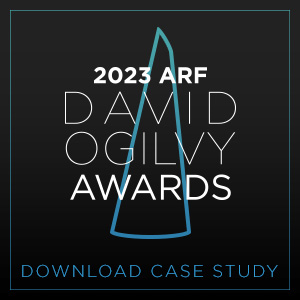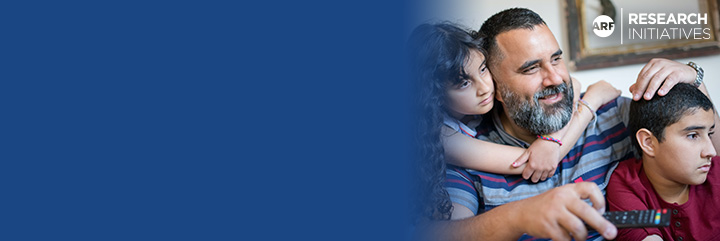creative effects
- Creative & Branded Content
- Article
Highly Creative Advertising Can Backfire for Popular Brands
Highly creative advertising is essential for lesser-known brands, but for familiar ones the effort may backfire, new research shows. If the highly creative ad is perceived as off-brand or forces too much information processing, it can damage consumers’ attitudes toward the familiar brand.
Member Only Access- Creative & Branded Content
- Article
How Effective are Cause-Related Messages in Advertising Today?
During the last five years, we have seen an upswing and change in the inclusion of values in advertising, especially the increase in cause-related marketing (CRM) which includes messages about societal goals such as sustainability, ESG (environmental, social and governance) and DEI (diversity, equity/equality and inclusion). Given marketers’ interest in these issues—ranging from wanting to express support for causes to being concerned about a possible backlash—the ARF has reviewed the research on cause-related marketing as well as related issues, such as ads with more general pro-social and altruistic messages. ARF researchers conclude that ads with cause-related messages can be effective, but many are not. Future research should focus on which kinds of messages are most effective among different consumer groups.
Member Only Access- Research & Data Quality
- Article
The Attention Measurement Validation Initiative: Literature Review
Attention metrics are at a pivotal point in our industry. They are moving from the lab into the marketplace. Being at the forefront of such research, the ARF is studying 23 attention measurement providers. The goals of the study are to better understand the different tools being used, their validity, reproducibility and rightful application—whether in evaluating ad creative or the media environment. In the first phase of the project, ARF researchers produced a literature review, which itself is illuminating and adds much needed context. We now offer this review to our members. In addition, the first phase will also include a comparative analysis and profiling of all the participating measurement companies. Stay tuned for this upcoming report.
Breaking through the Blind Spots: How Marketers can be a Force for Good and Growth
On July 13, 2023, the ARF Young Pros gathered in New York City to examine the methodologies and insights that make for a better marketing experience. Industry leaders shared their unique perspectives to encourage attendees to reflect on society’s biases and blind spots more broadly, as well as how they echo through the media landscape. The July 13th Young Pros hybrid event consisted of three parts:
- Interview with Rachel Herzig, Market Research Director at Ipsos, the 2023 Young Pro Great Mind Award winner. The Great Mind – Young Pro of the Year recognizes an outstanding ARF Young Pro who has shown exceptional leadership, important contributions, and potential for future industry impact.
- Perceptions of LGBTQ+ Representation in Advertising and Media Presentation by Anna Wilgan, VP, Product Marketing at Kantar and Veronica Hernandez, Product Manager at Nielsen.
- Panel discussion which included Anna Wilgan, VP, Product Marketing at Kantar and Veronica Hernandez, Product Manager at Nielsen and was moderated by Sean Eagan, Associate Manager at Nielsen.
- Targets & Segments
- Article
Breaking through the Blind Spots: How Marketers can be a Force for Good and Growth
On July 13, 2023, the ARF Young Pros gathered in New York City to examine the methodologies and insights that make for a better marketing experience. Industry leaders shared their unique perspectives to encourage attendees to reflect on society’s biases and blind spots more broadly, as well as how they echo through the media landscape.
Member Only AccessHow to Win an ARF David Ogilvy Award: Best Practices & Tips
On April 13, 2023, the ARF hosted a best practices and tips session about how to win an ARF David Ogilvy Award. The ARF held this event to invite and encourage a wider pool of applicants and improve the quality of the entries. Two veteran Grand Jurors, Ann Green, SVP, Client Partner at Kantar and Abby Hollister, Principal at Formative Insights, demystified what constitutes an excellent written explanation and its winning ingredients. Rachel Rodgers, SVP of Creative Excellence at Ipsos introduced and closed the session.
ATTENTION 2023
On June 7, 2023, attention economy experts came together in NYC to share case studies and participate in engaging discussions on the attention measurement landscape. Plus, attendees heard a recap of the issues debated at AUDIENCExSCIENCE and an update on Phase I of the ARF Attention Validation Initiative, an empirically based evaluation of the rapidly developing market for attention measurement and prediction.
Ad-Spend Cues, Deepfakes/A.I., Badass Endorsers and Influencer KPIs
At this Insights Studio, authors from three different continents showcase their recently published work—including the JAR Best Paper 2022 on how advertising expenditures drive consumers’ perceptions of ad and brand quality. Also featured are studies on deepfakes and AI reshaping the advertising industry, the success of using product endorsers who are actors known for roles portraying despicable characters, and KPI patterns of social media influencers across several platforms. Talking points in the concluding Q&A span the future of AI in advertising and influencer marketing, machine-driven decisions for choosing endorsers, and factors (product- and economic-related) affecting consumer perceptions of quality in TV ads and engagement in user-generated content.
Should Advertisements be More Entertaining?
Two researchers call for a new approach to marketing.





